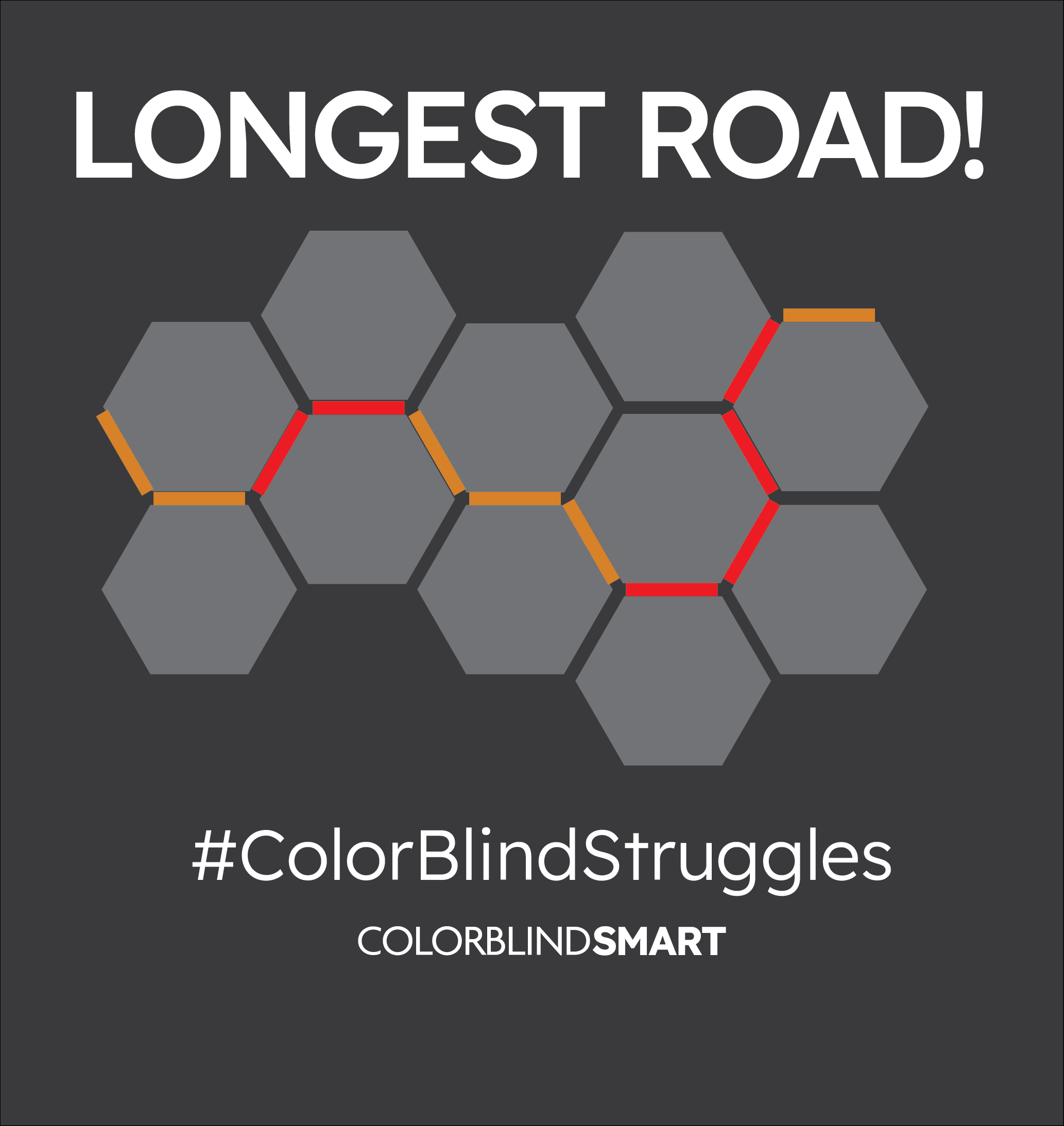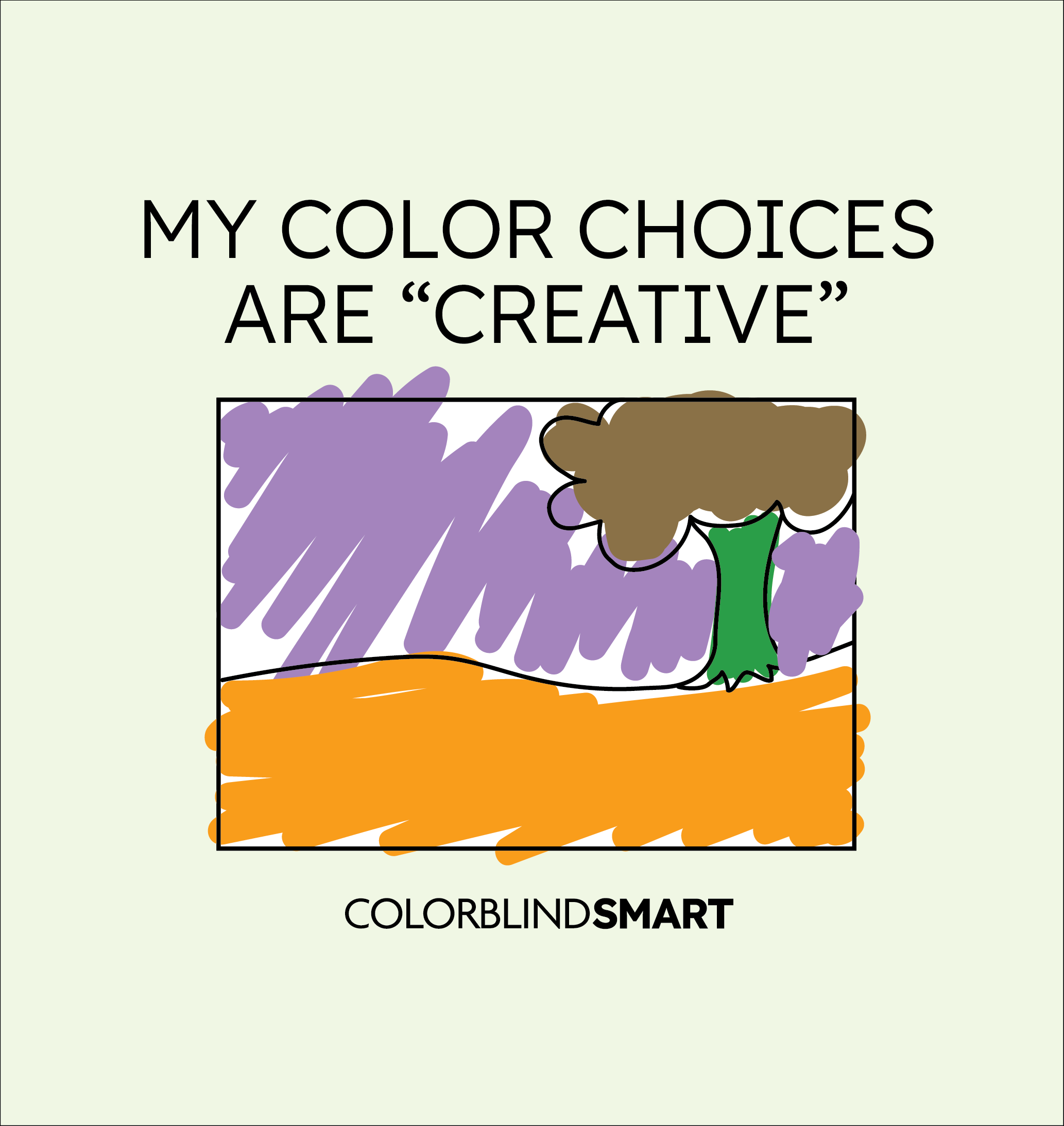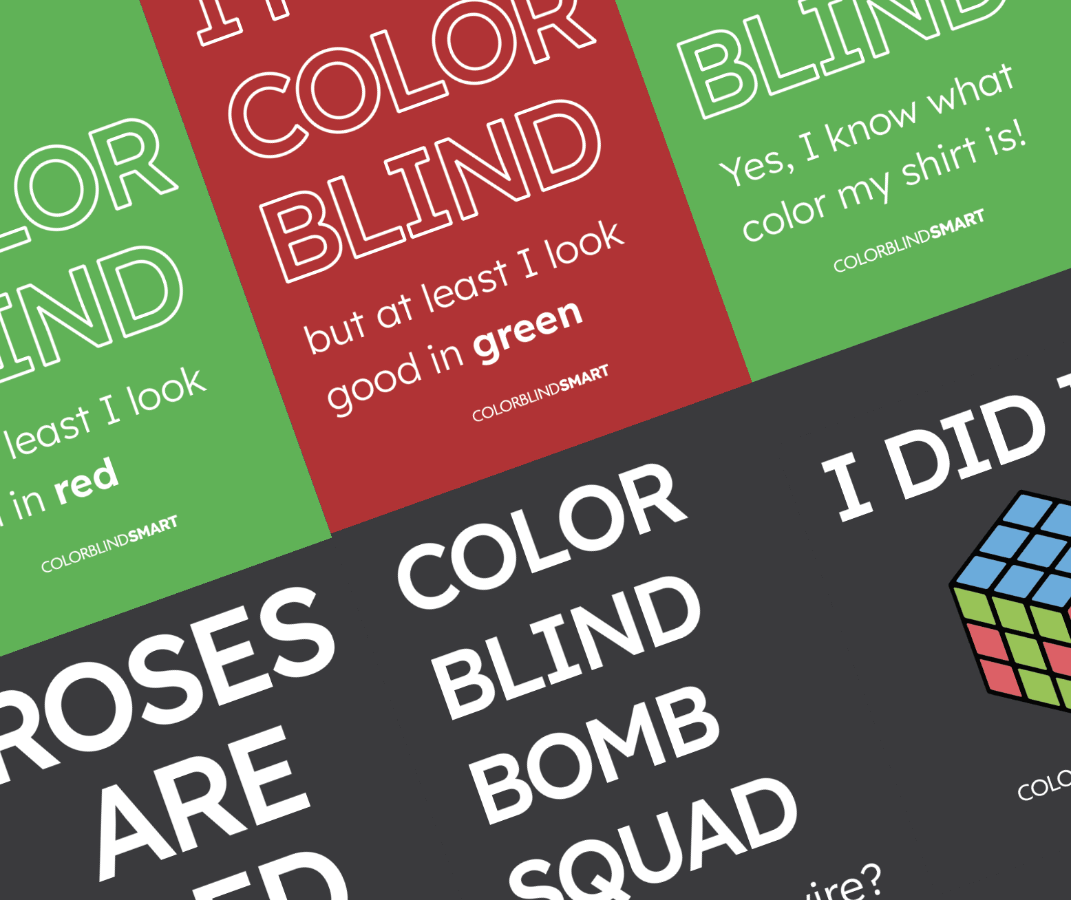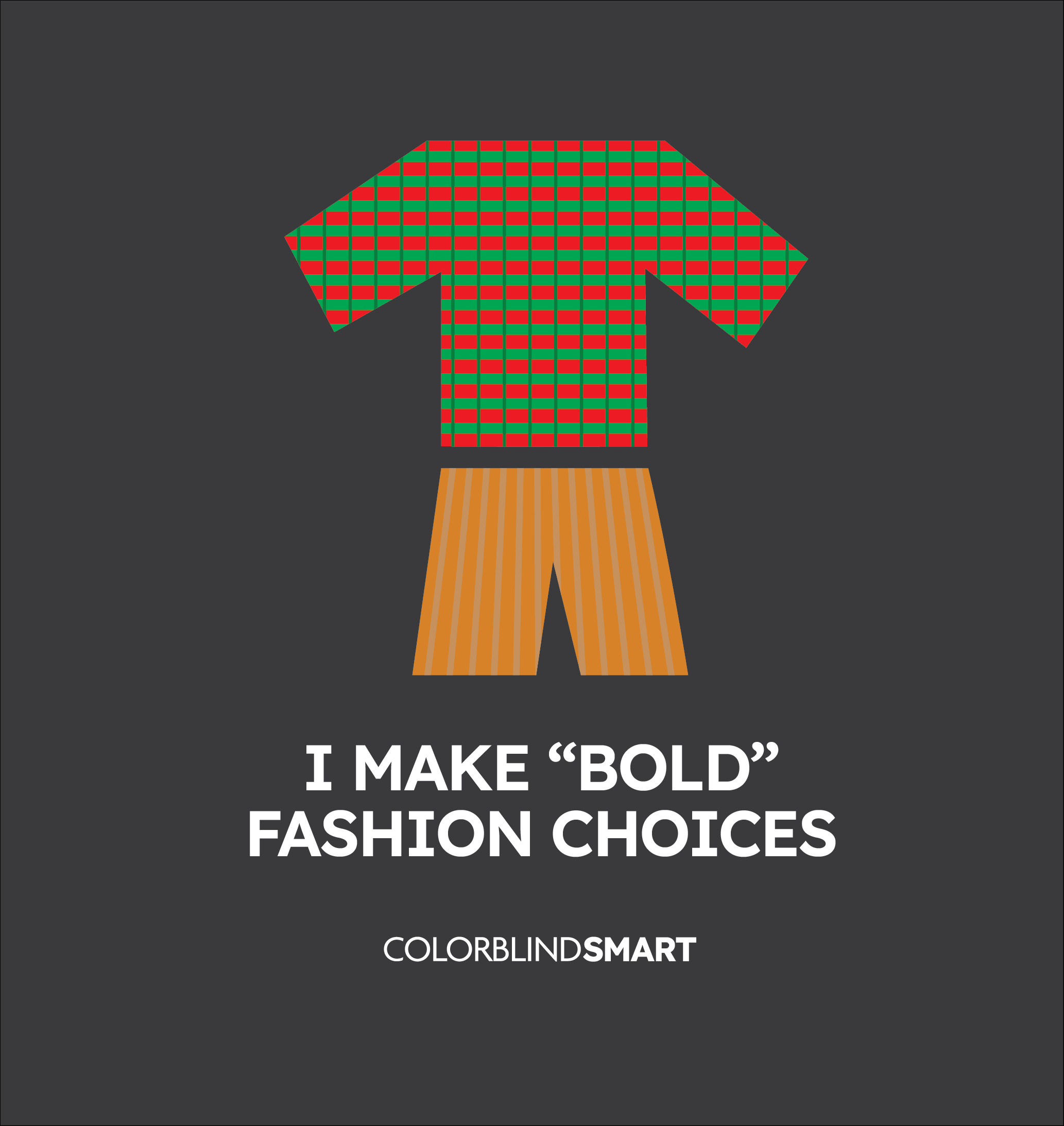Colorblind Catan Game, Longest Road!


←
Colorblind Creative Coloring Choices

All Color Blind Memes

→
I Make Bold Fashion Choices Color Blind Meme
The "Colorblind Catan, Longest Road!" meme pokes fun at the confusion red-green color blind players face when trying to tell game pieces apart in Settlers of Catan. Learn how color blind gamers adapt and why accessible design in board games matters.
The “Colorblind Catan Game, Longest Road!” color blind meme shines a spotlight on one of the most relatable moments in tabletop gaming for colorblind players: not being able to tell whose pieces are whose.
In games like Settlers of Catan, red and orange pieces are hard—if not impossible—to distinguish for players with red-green color blindness. So when someone claims “Longest Road,” you might realize too late that half of those pieces weren’t yours.
It’s a joke, yes—but it also reflects a real design issue in the world of color blind board games.
Why This Meme Hits Home
The humor of this meme lies in the mix of confidence and realization. You’ve carefully mapped your route, earned your bragging rights—and then someone quietly points out that you’re counting the wrong pieces.
For people with color vision deficiency, it’s not about paying better attention. It’s about not being able to see the difference in the first place.
This happens constantly in colorblind gaming—not just in Catan, but in dozens of popular board games where player colors are the only visual distinction.
The Challenge of Color Blind Gaming
About 1 in 12 men and 1 in 200 women live with some form of color blindness. Yet many classic games rely solely on color to differentiate pieces, cards, or player tokens. That makes gameplay harder, slower, and sometimes frustrating for colorblind players.
In Catan specifically:
- Red and orange roads blend together
- Green and brown resources can be tough to tell apart
- Player cards and tokens may not be labeled clearly
And Catan isn’t the only offender. Countless games from Monopoly to Risk use similar color palettes that exclude a significant part of the player base.
Color Blind Board Game Solutions
Luckily, color blind gamers have found ways to adapt—and some publishers are catching on.
Tips and Tools:
- Use shaped tokens or stickers to mark pieces by player
- Assign unique patterns or icons alongside color
- Swap in colorblind-friendly replacements like third-party game piece sets
- Play with labeled player cards showing names and color
- Use an accessibility kit with textured overlays or labels
Some board game publishers are also starting to release colorblind-accessible editions with better contrast and alternate cues.
Why Accessible Game Design Matters
The “Colorblind Catan” meme makes people laugh—but it also starts a conversation. Games are meant to be inclusive. When pieces rely solely on color, some players are left out, or forced to memorize positions and guess under pressure.
Better design benefits everyone. Adding patterns, icons, or texture isn’t just helpful for the colorblind—it’s helpful for kids, beginners, and players with visual fatigue.
Conclusion
The “Colorblind Catan, Longest Road!” meme is funny because it’s true. It reflects a shared moment of confusion that’s all too common in the world of tabletop games. But it also highlights the need for better, more inclusive design.
If you’ve ever second-guessed your victory because you couldn’t tell orange from red, this meme—and this movement—is for you.
Looking for more?
Explore the full collection of color blind memes here.
Last updated: June 11 2025